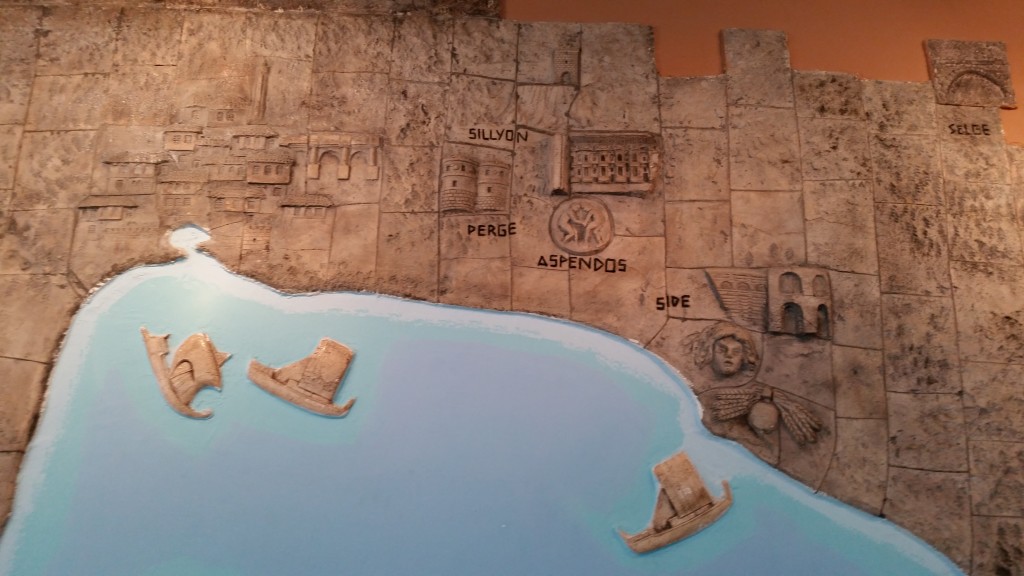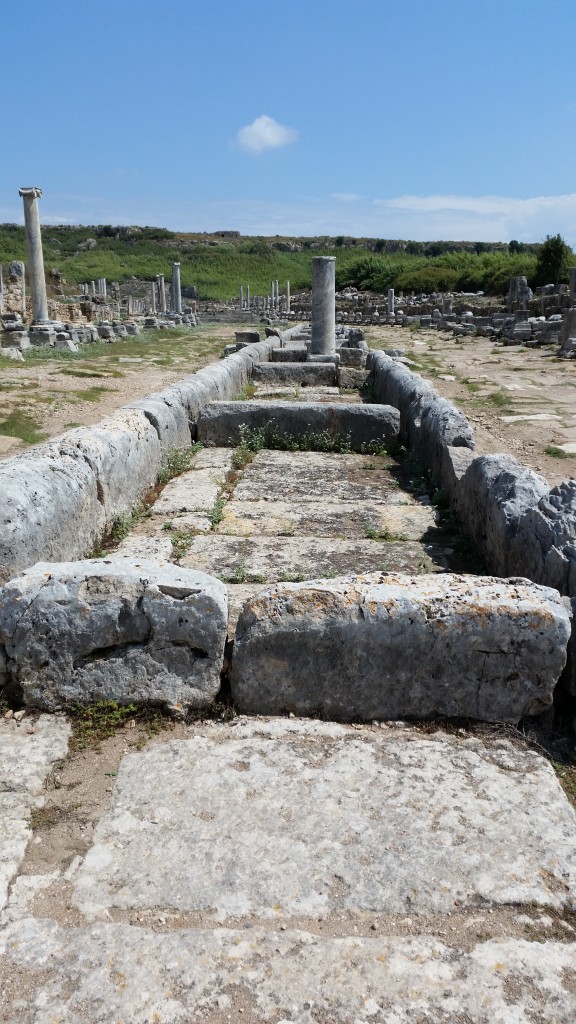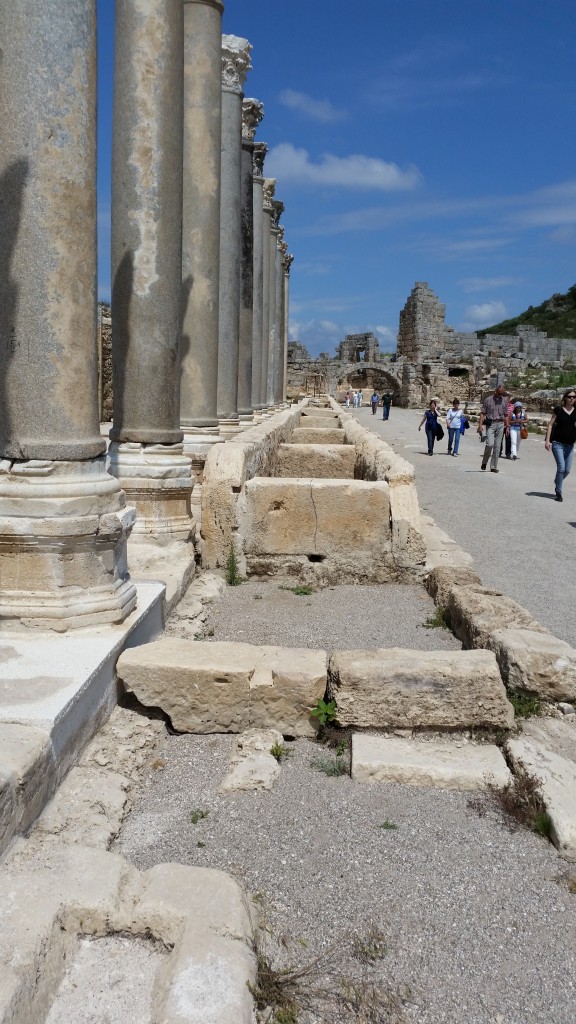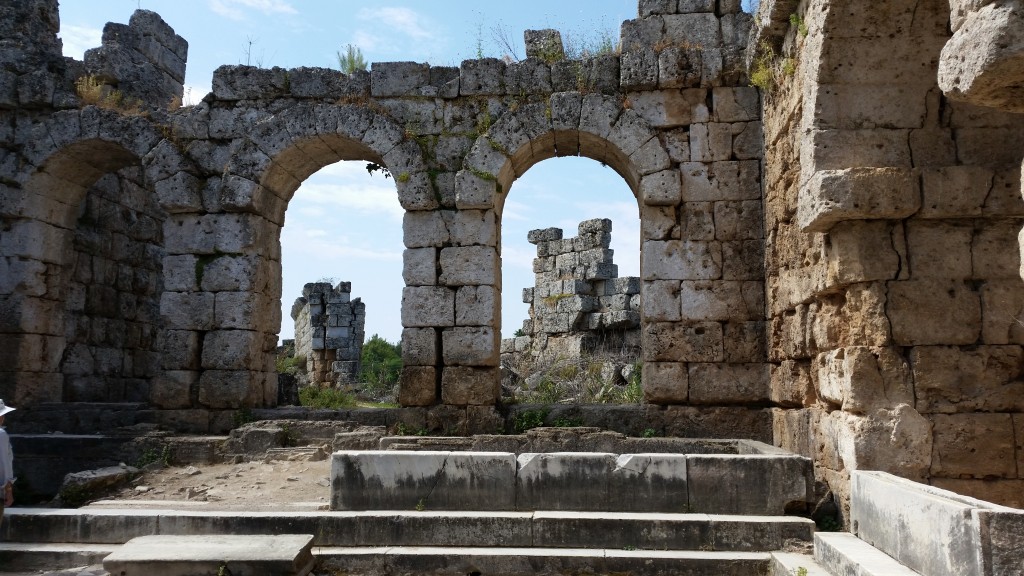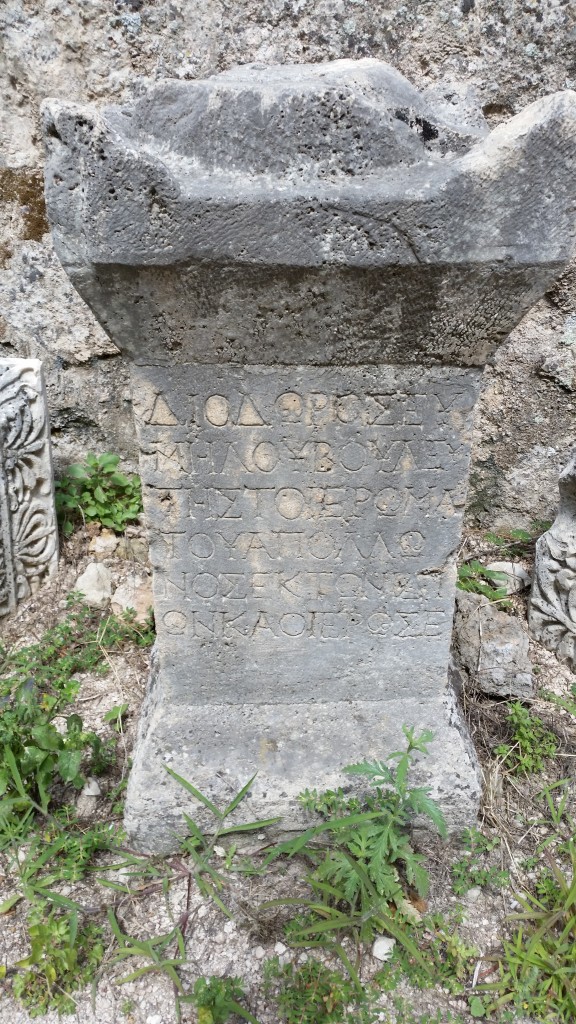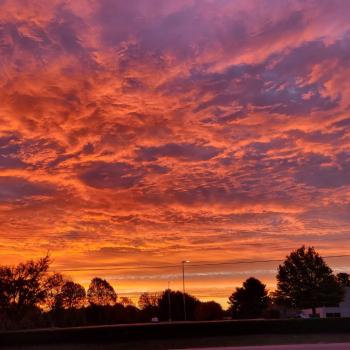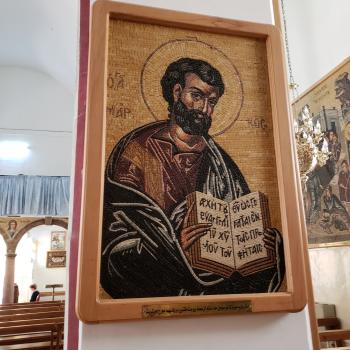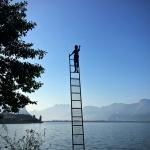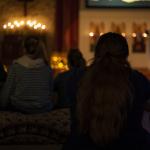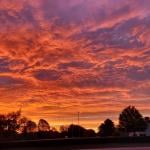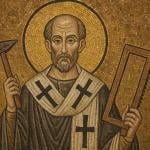The ride from Myra to Antalya was rather long, and as we skimmed along the southern coast, and turned north and east, the sun was setting but you could just see a huge array of what looked like plastic covered buildings. As it turned out, that is exactly what they were— greenhouses. Produce is a huge industry in this country, and they have increased their productivity dramatically through the greenhouses.
In fact there are whole towns that depend on their produce for their economy, and proudly advertise what they grow right in the traffic medians of their main streets… for example (from a small town near Antalya),
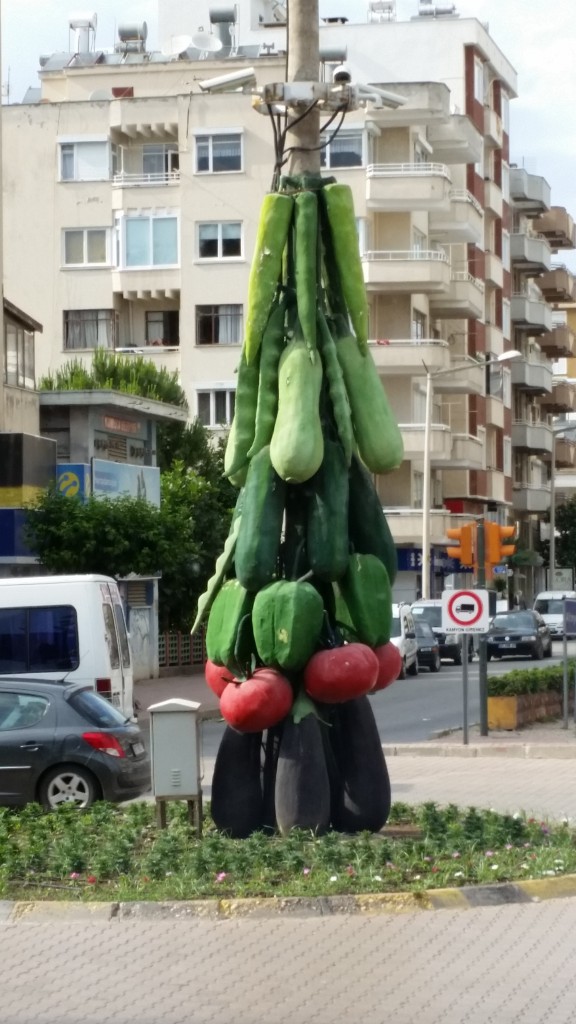
Just for review here is a two part map of the ancient southern coast of the western part of Turkey. One note. In the second picture Antalya is ancient Attalia (mentioned along with Perge as Pauline places in the NT), but it is not labeled on the second picture below. It is on the left end of the map where the two boats are sailing into port.
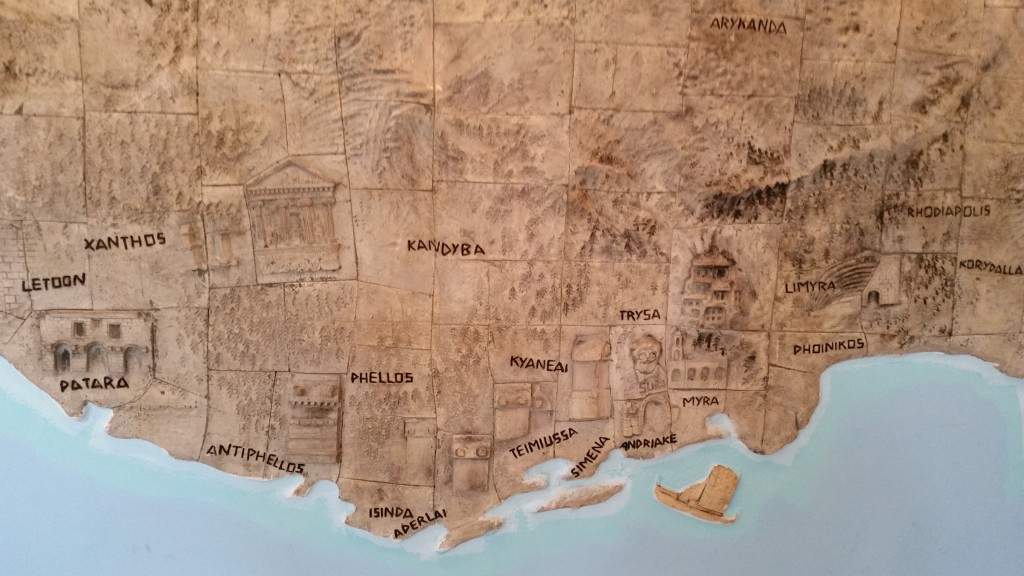
See if you can find Xanthos, Patara, and Myra on this first map, visited in previous posts.
The morning of our last full day of touring dawned with a beautiful view over the bay at Antalya…. the mountains in the distance still had a bit of snow on them.
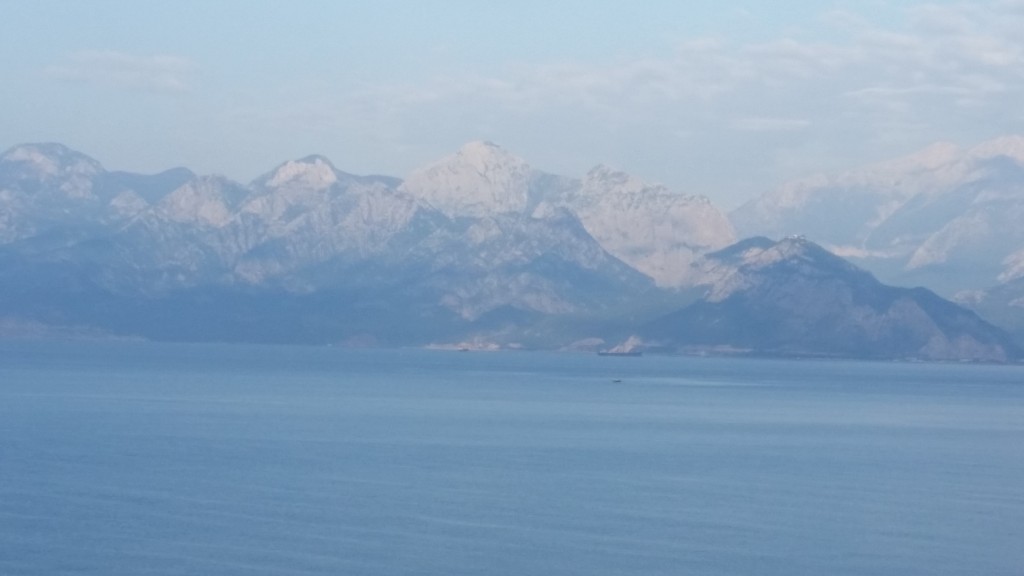
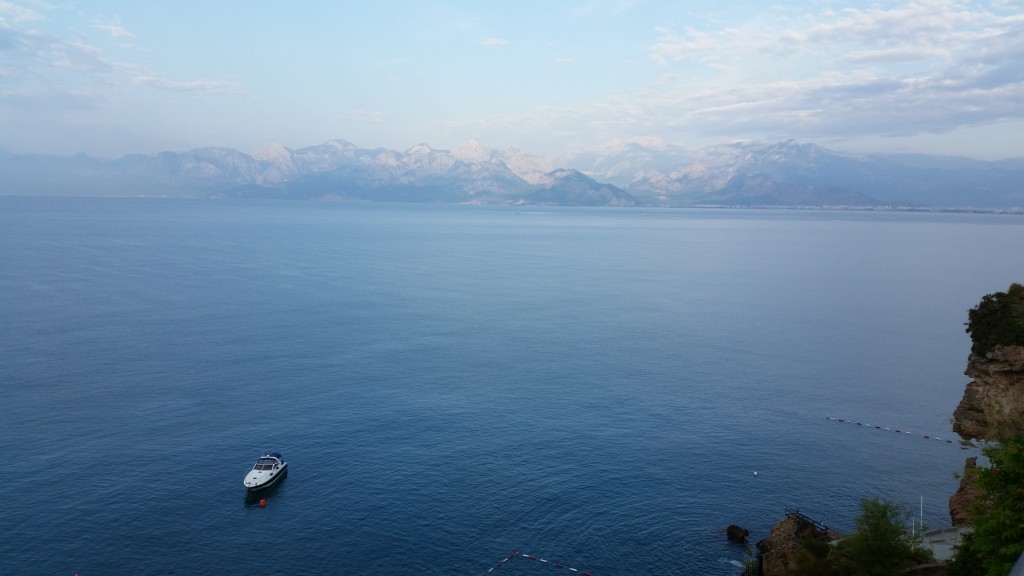
Our first site for the day is Perge a place Paul began and finished his first missionary tour of the mainland of Anatolia. As for us, one could say that up to now we have been binging on archaeological sites and now we are going to Perge (get it, purge). Here is the map of the site…
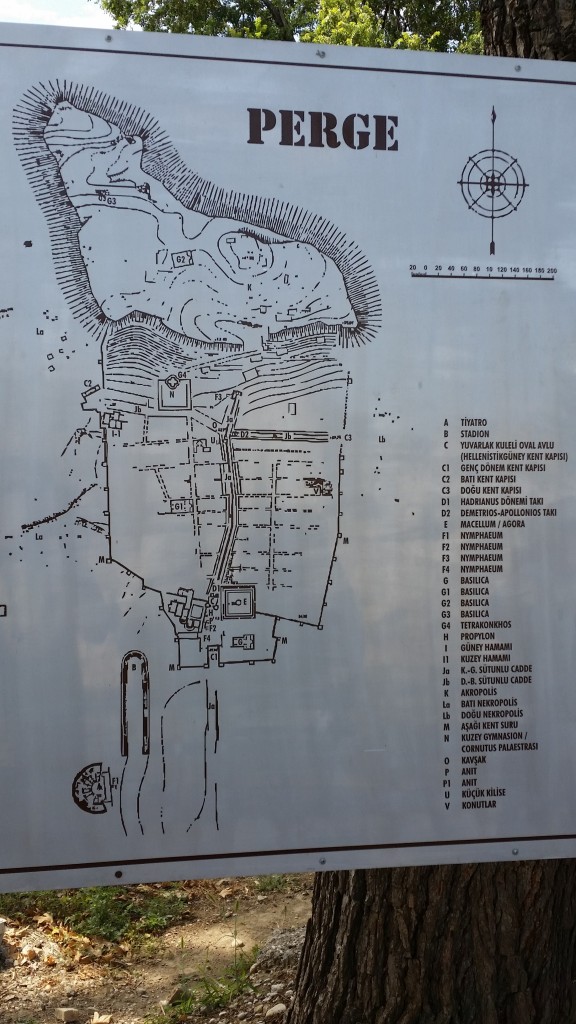
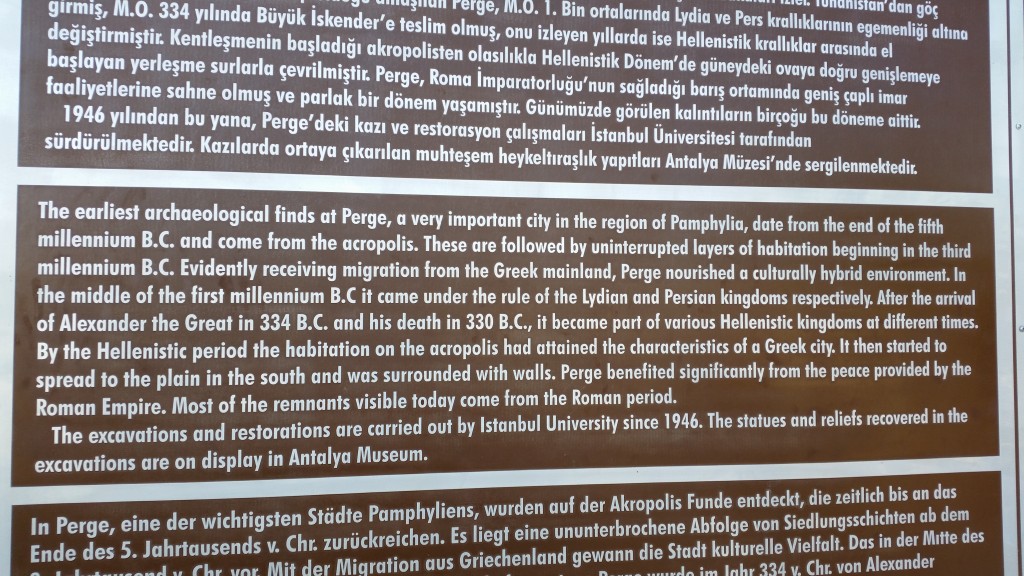
This was a major Hellenistic walled city, but in Roman times during the so-called Pax Romanum mnajor buildings could be and were built outside the old city walls, in this case a huge hippodrome and a theater as well which you can see at the bottom left of the map. We will not be looking at those as they are not open to the public (restoration in progress). I’ve been in the theater before and it’s impressive.
Here is one of the old Hellenistic watch towers at the entrance gate to the old city.
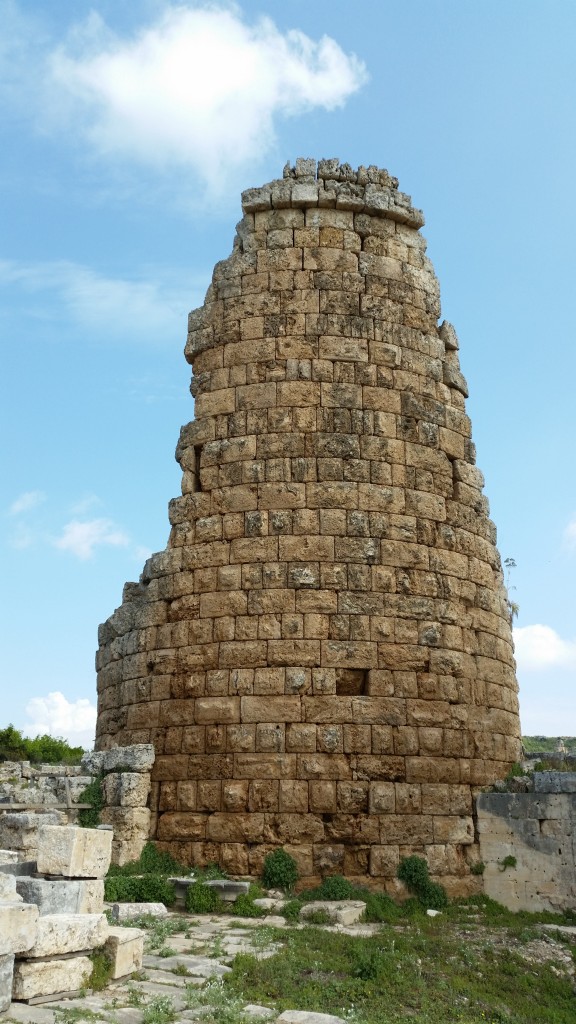

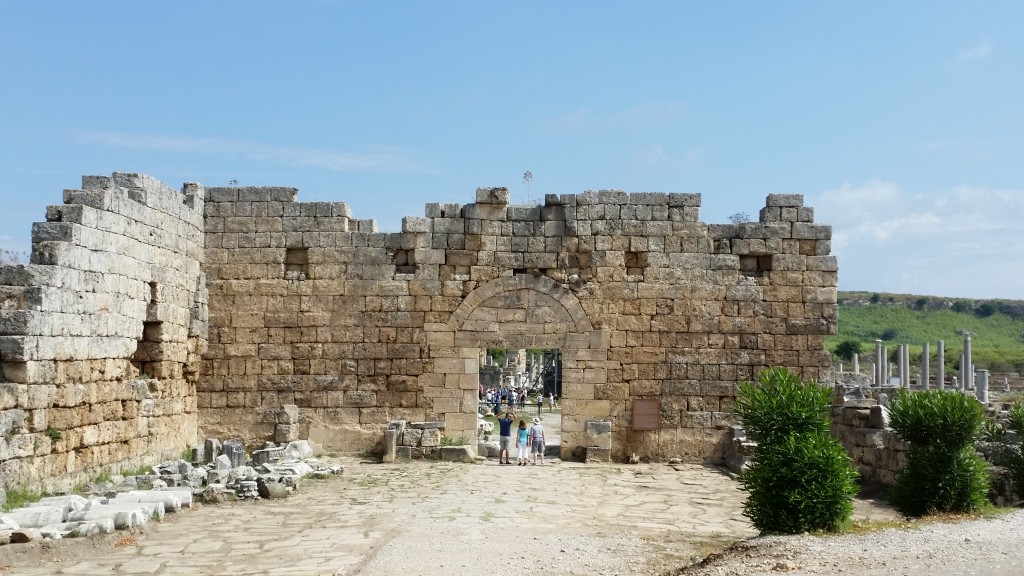
This is a huge and interesting site, with a lot of recent archaeological work, and we will be moving slowly through it….
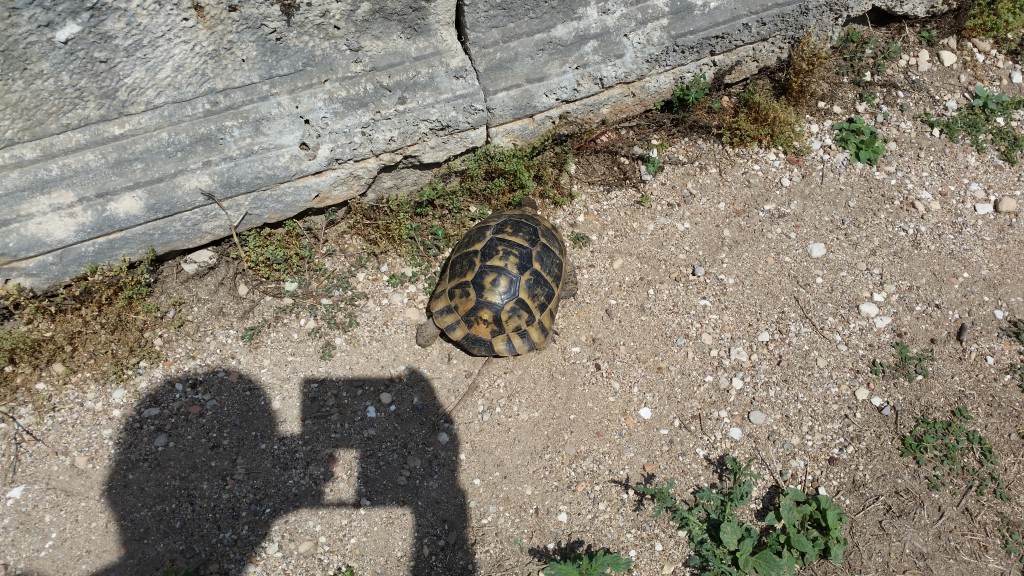
Well maybe not as slow as this guy. As you wander down the main street…
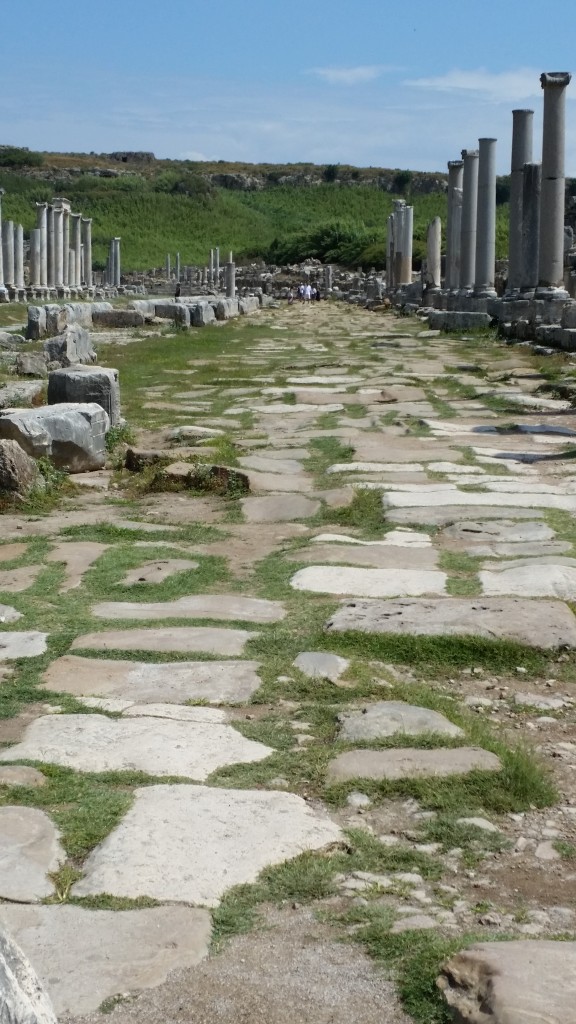
the major feature of this city is all its waterworks….. in fact I’m saying this town should have been called Watertown, because of its abundant supplies of water, displayed in water canals, fountains, baths, nymphaeums, you name it. The central water canal down the main street is still impressive, and you see nothing like it on this scale in any other town we have visited. In antiquity the persons who control the water, control survival of a city. This town could not be starved out under siege, because it had abundant water supplies, and it had huge storage units it could store grain in. Even though this was not a city set on a hill, it must have been pretty impregnable to marauding bandits or armies if the walls were well defended. And interestingly the water canal comes from the Roman. The city forefathers who planned this city during Paul’s visits were very wise indeed.
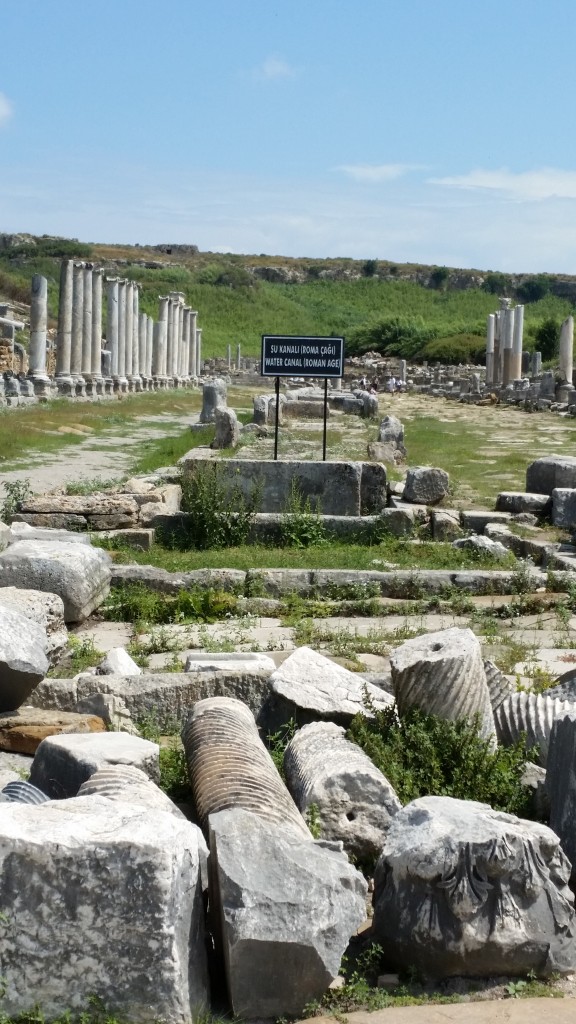
At the far end of the main water canal down main street was a gigantic fountain, (think Trevi fountain in Rome) spouting water from nymphs….. you can just see its remains here in the distance…
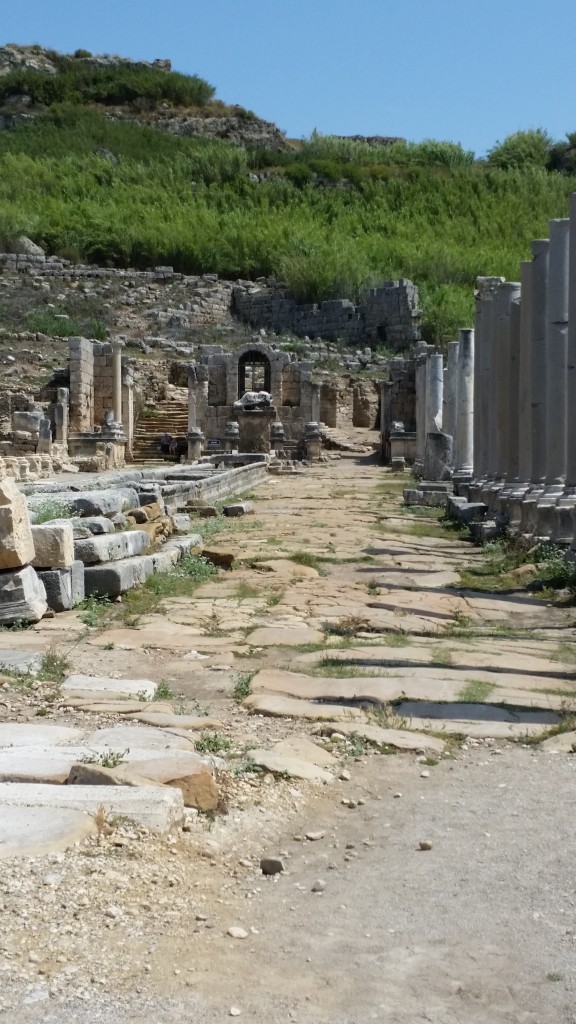
Then there are both north and south bath complexes.
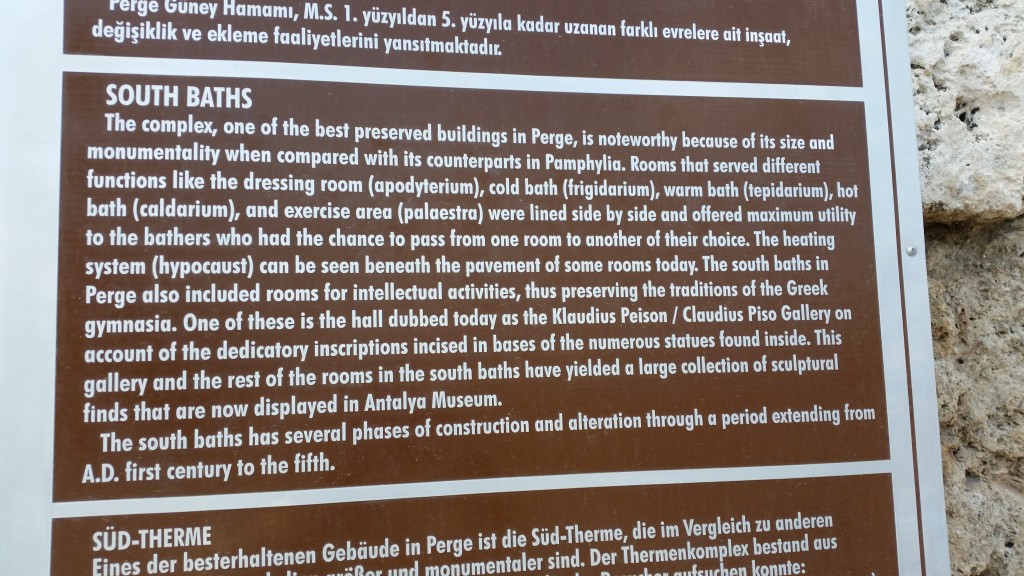
Check the posts from June on Scythopolis about the bath complexes… here are the remains of the baths in Perge…

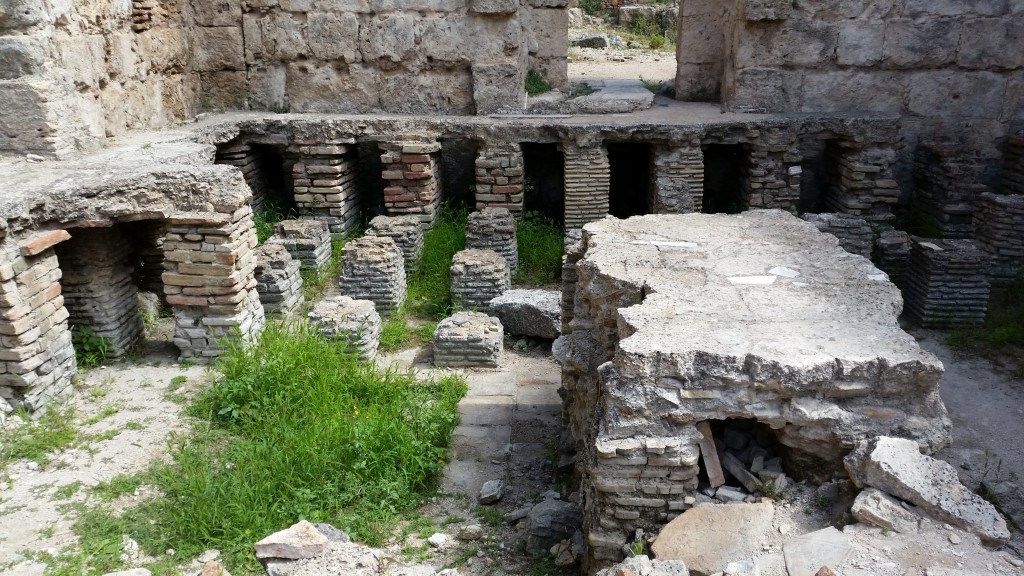
You see the same hypocaust system of heating the water in all these towns where the Romans built baths. And there are quite literally fountains everywhere in this town…
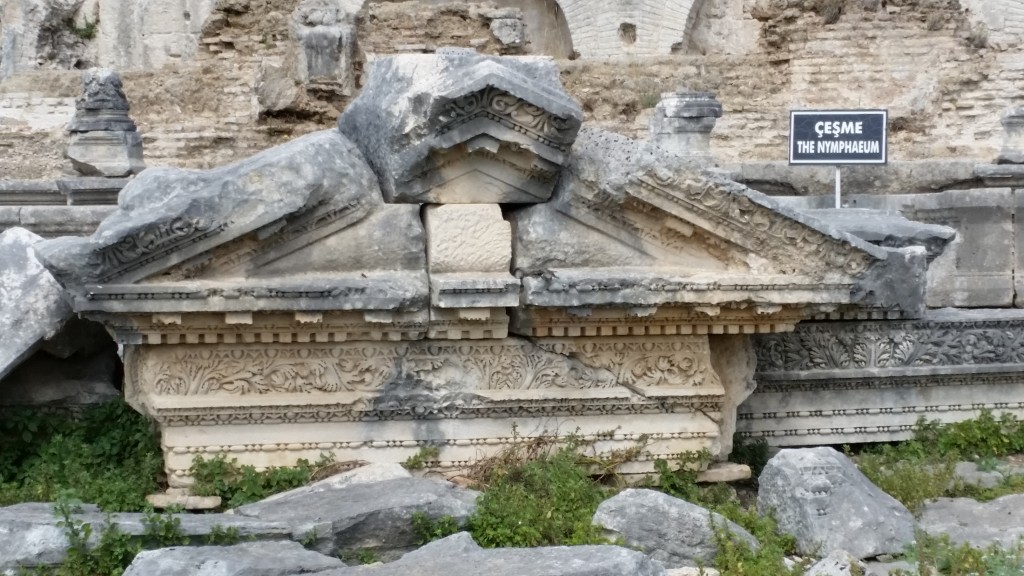
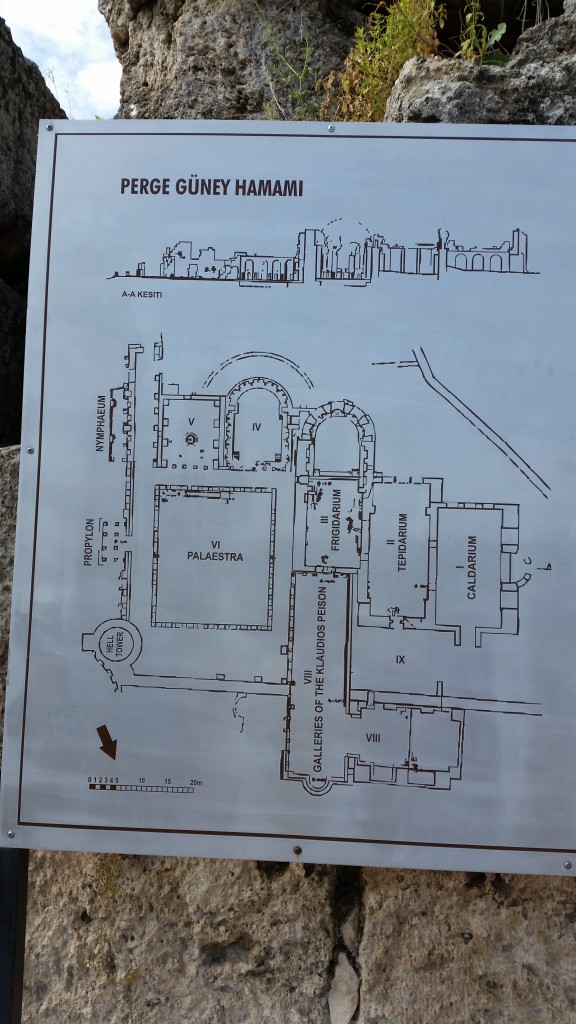

Of course this place was wicked hot in the summer, over 100F and humid being near the coast. It is not a surprise you have baths, fountains, water canals, and even fountains for the animals everywhere…check out this bird bath…
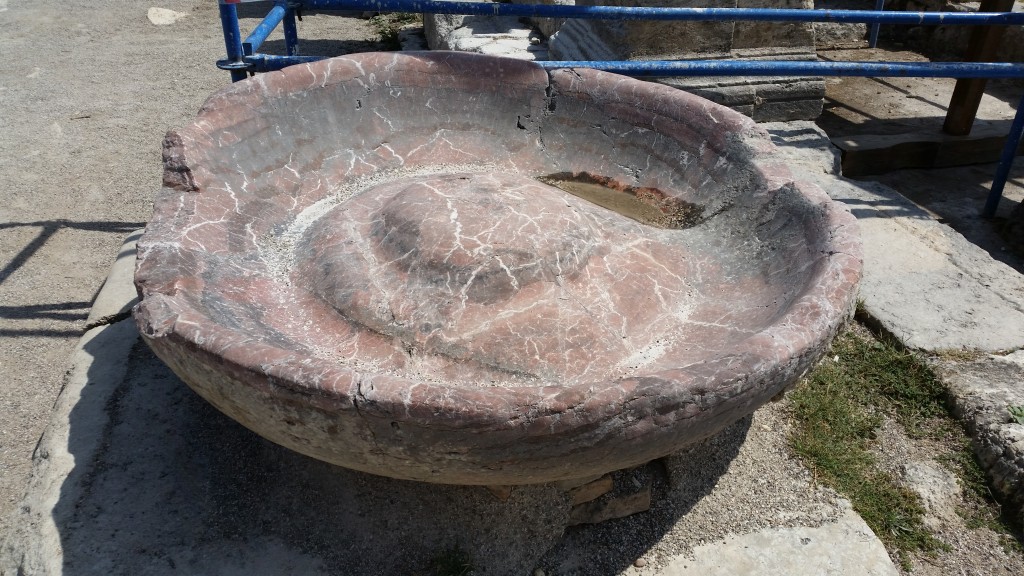
Most anything will grow in this kind of climate…
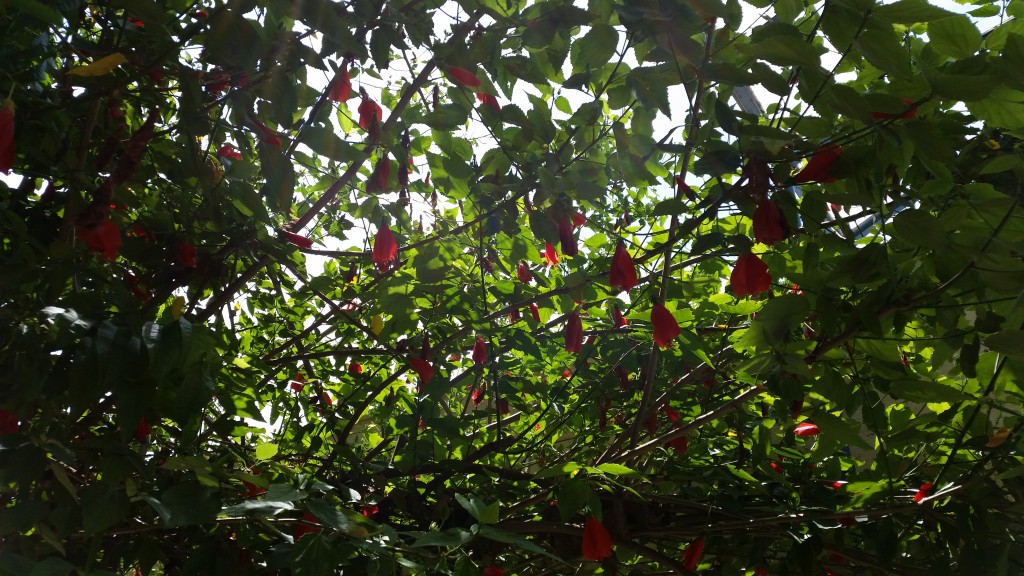
When Paul and Barnabas came to town they would have walked down the main street by the canals heading north to Psidian Antioch (probably because of a letter of reference from Sergius Paulus who had connections there, as the inscriptional evidence shows). They would have passed this column, with the interesting image of a deity, presumably Artemis, on it.
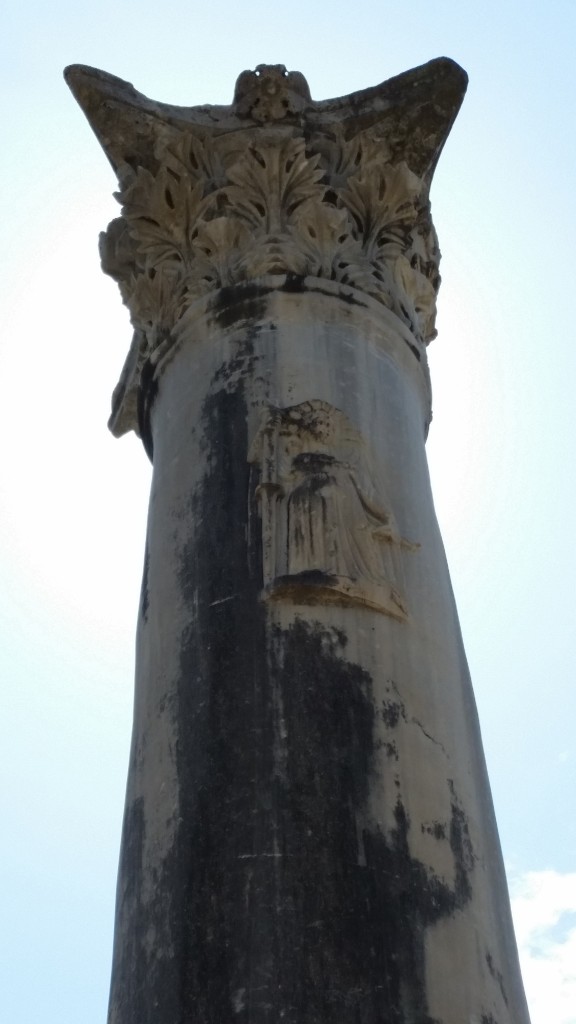
They would have passed a forest of columns and shops and baths (many of these columns only recently re-erected)…
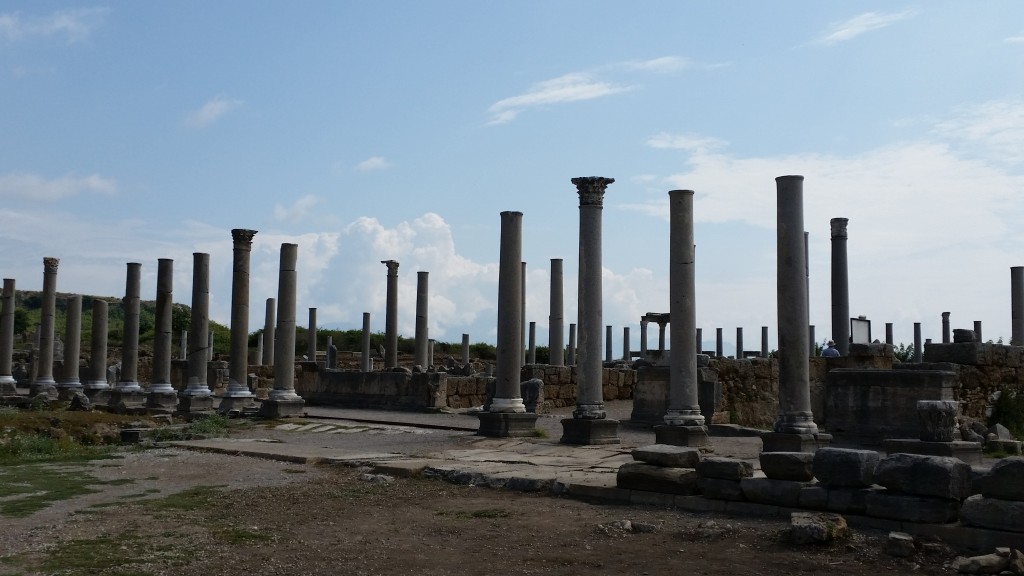
Had they wanted to go to Ephesus, they would have turned left at the major intersection of the two main streets and headed down this way, which by the way, is the new excavation here. This whole street has now been uncovered and is being put back together.
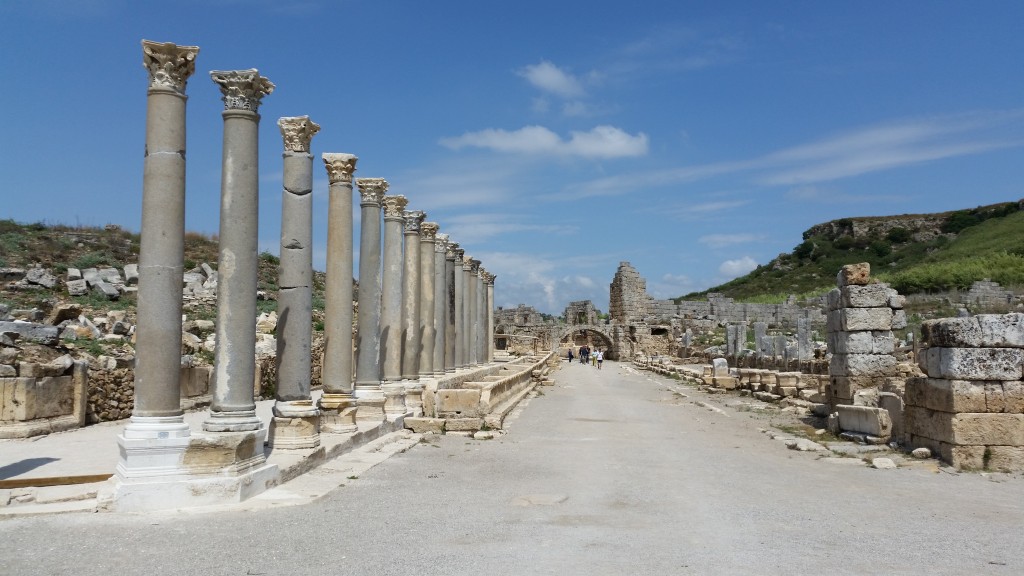
There is still much to put back in place, but the work so far is impressive. This is an interesting contrast with Italy, with its budget retrenchments. As Italy is curtailing archaeology work, and even shutting off areas of Pompeii that need work, Turkey is ramping things up.
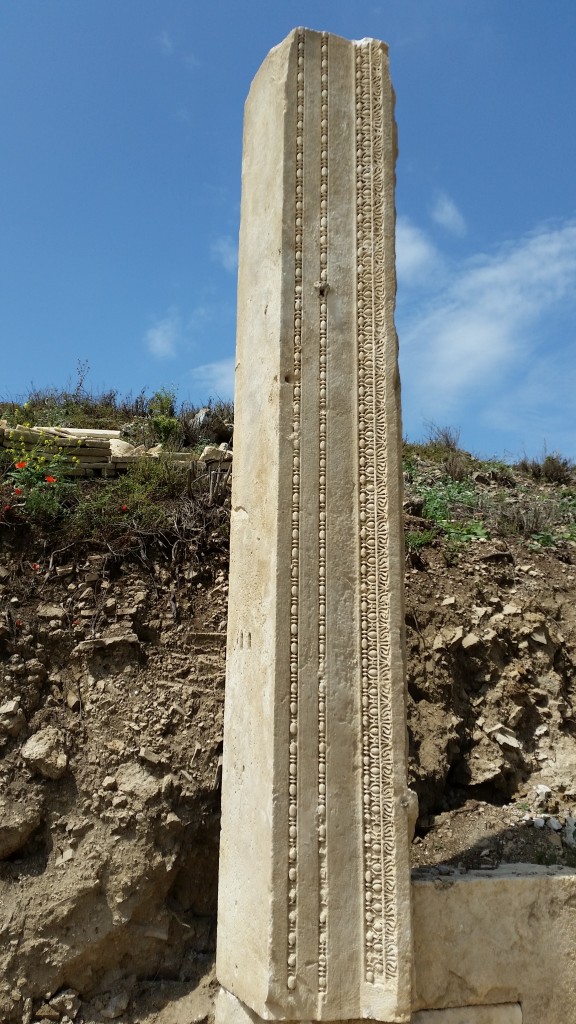
Here, as elsewhere, there are lots of honorific columns and stelae, and here is one of the more important ones. The patron deity of this town, as in Ephesos was Artemis/Diana. Here we have an inscription about Plancia Magna, a priestess in the temple of Artemis, and apparently a major benefactor in the city as well (which is how you get such inscriptions written for you). Well to do women in this town, if they joined the Jesus movement, would expect to play important roles in their new religion— and they did. Paul had no problems with that as long as decency and decorum were followed. (Motto: Only upset people’s apple carts that have rotten apples in them).
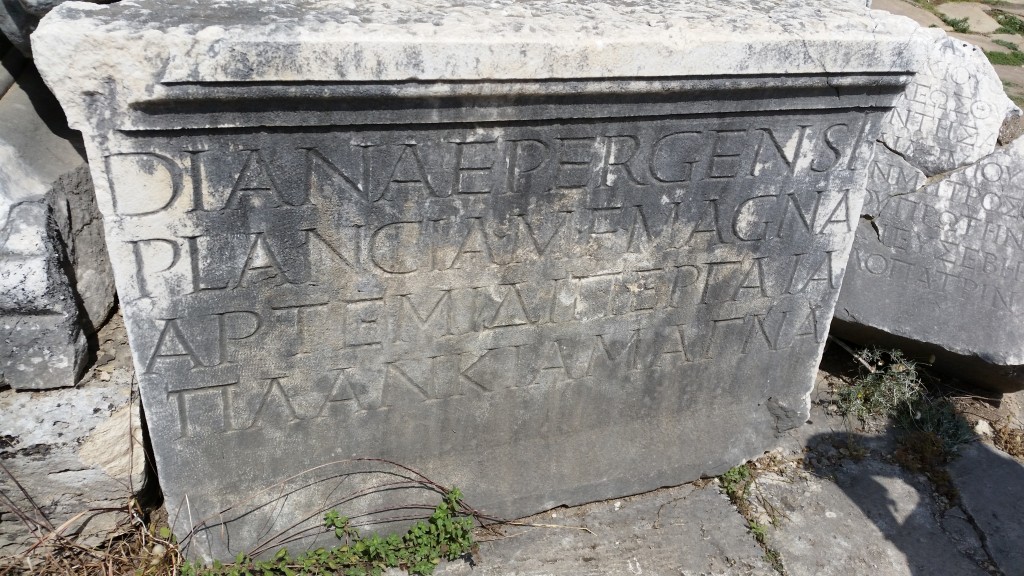
Here’s another interesting one which reads ‘to the holy and righteous [one]’… presumably there was originally more to the inscription….

Here is one found recently in the excavations on the new street. Notice the contrast between the elegant lettering in the inscription above, and the almost homemade look of this inscription which ends with the word ‘anatheka’
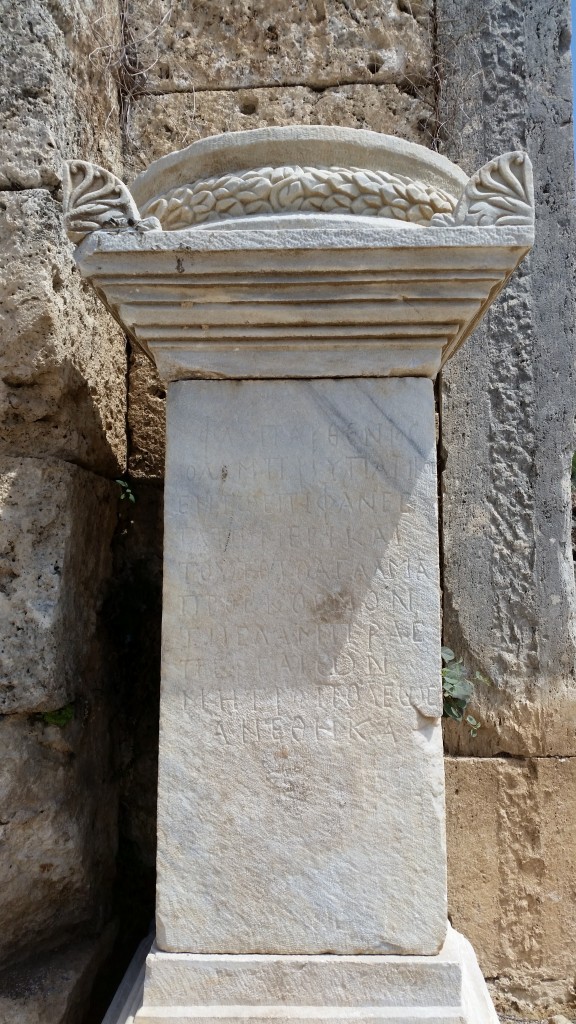
If you think you are beginning to get a picture of Paul’s world, or what it was like to visit Perge, you haven’t seen anything yet. Half of Perge, in particular its statues, are all in the world class museum in Antalya. And we turn to it, next.



